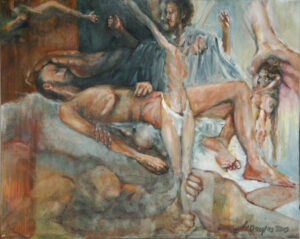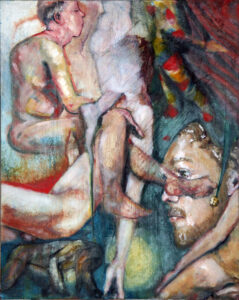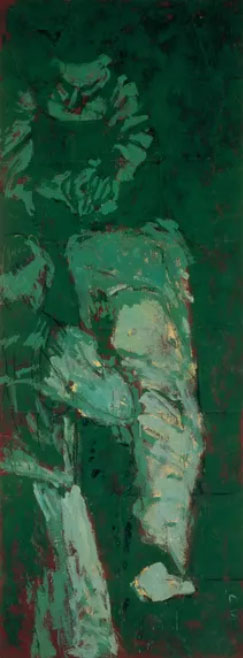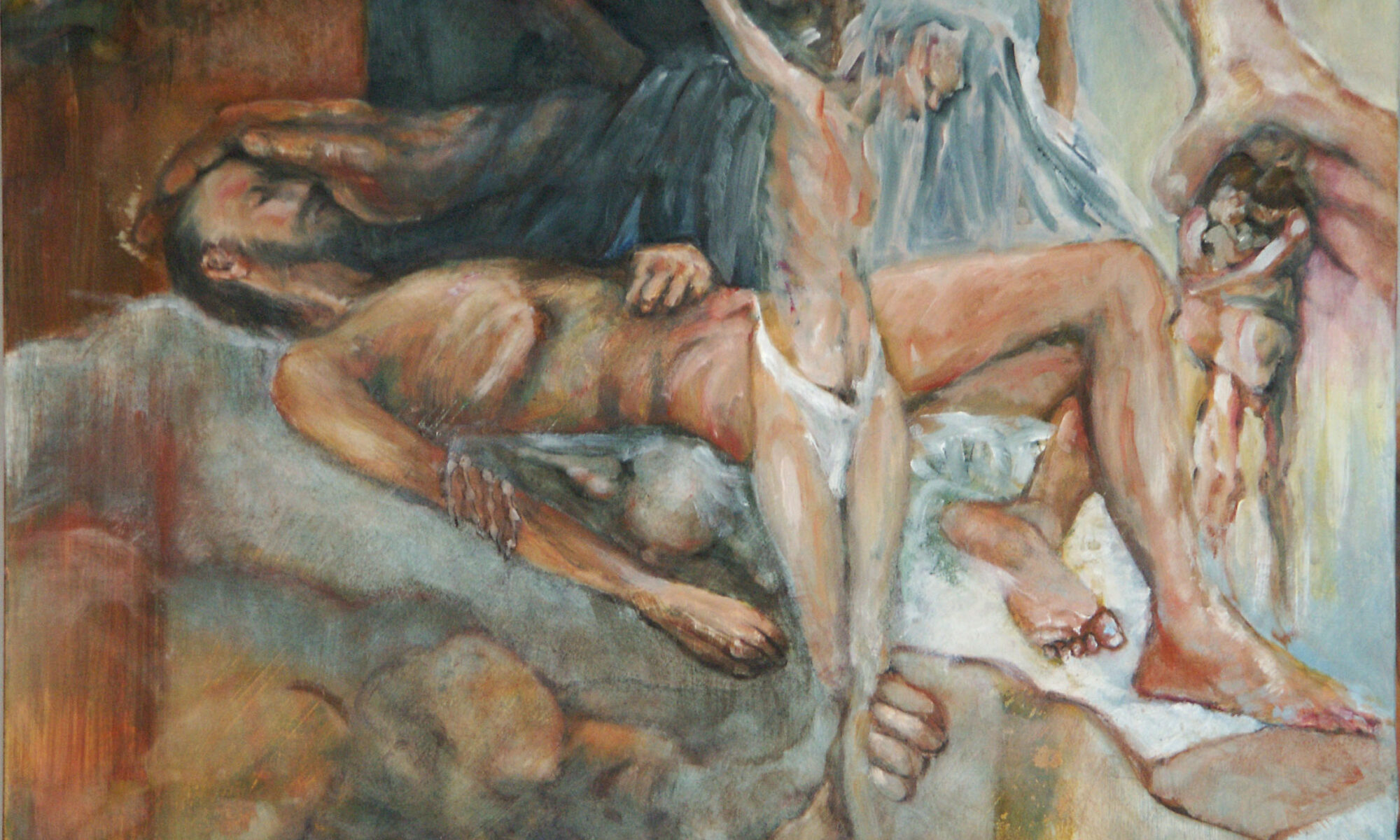
There’s a common misconception that knowing the juror improves your odds for a show. I’ve found the reverse to be true. Knowing the juror usually ends up being a liability, since your friends bend over backwards to avoid the appearance of impropriety. This is a story where knowing someone slightly resulted in bad press.
For those of you who don’t know the story, Lazarus died, and four days later, Jesus went into Lazarus’ tomb and resurrected his friend. This was Jesus’ last miracle before the events of Good Friday and Easter, and prefigured Jesus’ own death and resurrection. I was still contemplating what ‘remission’ meant in my life, so the dark subject appealed.
In my painting, Lazarus is beginning to putrify. Death is gnawing on his arm. Jesus is being dragged down from the cross by demons into hell, and at the same time he is the power of resurrection himself, our Great High Priest. To the far right are Adam and Eve being cast naked into the world, because Christian theology calls Jesus ‘the second Adam’ (it’s complicated). At the top left is a figure representing suffering mankind.

This was before I knew not to apply to shows that were beyond my pay grade, and naivete (as so often happens) paid off. The painting was accepted into a prestigious national show.
Then I received a newspaper review in the mail. My painting was singled out for excoriation. The two comments that rankled most were, “immature use of color,” and “I don’t know what [the curator] was thinking to include this painting.”
What the critic didn’t disclose is that he had a nodding relationship with me (the art world is small, with much overlap). To speculate about his reason for spitefulness is pointless, but he did tremendously jar my confidence. I’ve only shown this painting twice in the 21 intervening years.

At the time, I I did what any mature person would do: I burst into tears and called my spiritual mentor, who let me cry all over her shoulder and made all the right noises about what a jerk he was. Today, I have far more self-confidence, but bad press is always a downer, whether it comes in the form of rejection, withering comments, or even self-doubt. A friend is an invaluable resource at those times.
As for my use of color, it was an intentional nod to the Renaissance palette, since they were the last great gasp of religious iconography.
Have a thoughtful Good Friday and a blessed Easter, my friends.
My 2024 workshops:
- Sea & Sky at Schoodic, August 4-9, 2024.
- Find your authentic voice in plein air: Berkshires, August 12-16, 2024.
- Art and Adventure at Sea: Paint Aboard Schooner American Eagle, September 15-19, 2024.
- Immersive In-Person Workshop: Rockport, ME, October 7-11, 2024.


I honestly don’t like the painting. But that doesn’t mean it’s not good. After all these years, you should show it if you want to and ignore your spiteful critic. I am sure there are many it would appeal to.
To explain: I’m not religious and this is not my taste.
Happy Easter yourself!
My one thought was the thing you left out that would have led to some fine reviews was the signature of some famous renaissance painter! 🙂 A pox on your friends house – hopefully karma has brought him what he deserved.
Ooof. No bueno.
Hoping to chat with you soon!
The hand on the head, upper left, was the most comforting feeling I have experienced in a long while. The inherent compassion and love hit me to the core. Have a blessed Easter awakening..
When you paint or write something about how you’re really feeling, you’re laying out your vulnerability, the contents of your head and heart to public view. That’s brave.
I currently have an exhibition of my work on display in my local library. The feedback has been largely positive. I did get chatting with a man who didn’t like some of my paintings. That’s okay. I don’t expect everyone to like everything. To have provoked an emotional response of any kind is a good thing.
There’s another local artist who paints the most magnificent landscapes and sells them for good money. But what he really wants to paint is the observational pictures of the marginalised members of society. They’re not easy to look at. I couldn’t say I like them, but they’re disturbing, beautifully painted and say something worthwhile.